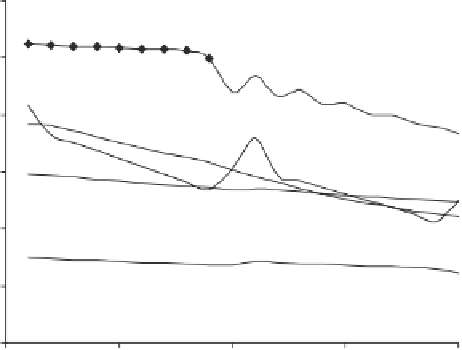Agriculture Reference
In-Depth Information
4.00
90
80
3.50
70
3.00
60
50
2.50
40
2.00
30
20
1.50
10
1.00
0
0
5
10
15
20
Year
Imperata-IMPLUS
Maize-FPLUS
Imperata-TIMPLUS
Maize-TCLUS
Maize-TCSFLUS
Timber-TIMPLUS
Timber-TCLUS
Timber-TCSFLUS
Timber-TPLUS
Fig. 14.2
Predicted yields of the alternative land use systems, Claveria, Misamis Oriental,
The Philippines
than in other land use systems. Yet, the least reduction in timber yield of one per-
cent was observed under TPLUS system. This result could be explained by the
lower rate of soil loss under this system.
3
14.3.4.2
Financial Profitability of Alternative Land Use Systems
The results of the benefit-cost analysis are presented in Table 14.5. With a discount
rate of 25 percent, all land use systems have positive NPV, which implies that they
were all profitable at this level of the cost of capital. The timber plantation system
(TPLUS) obtained the highest NPV (PhP 241,170 ha
−1
) followed by TCSFPLUS
(PhP 98,121 ha
−1
) and the lowest NPV (PhP 271 ha
−1
) was obtained by the
Imperata
-
grazing (IMPLUS) system. The current farmers' practice of annual maize cropping
(FPLUS system) predicted a relatively higher NPV (PhP 21,161 ha
−1
) than IMPLUS
system, but lower than the TIMPLUS system (PhP 35,031 ha
−1
), TCLUS system
(PhP 56,074 ha
−1
), and the TCSFLUS system (PhP 98,121 ha
−1
). Consequently, the
TPLUS system predicted the highest annualized net benefits (PhP 60,996 ha
−1
year
−1
) to farmers and the lowest ANB (PhP 69 ha
−1
year
−1
) was from IMPLUS
3
Soil erosion results are discussed in detail in the succeeding environmental impacts section.

















































































Search WWH ::

Custom Search